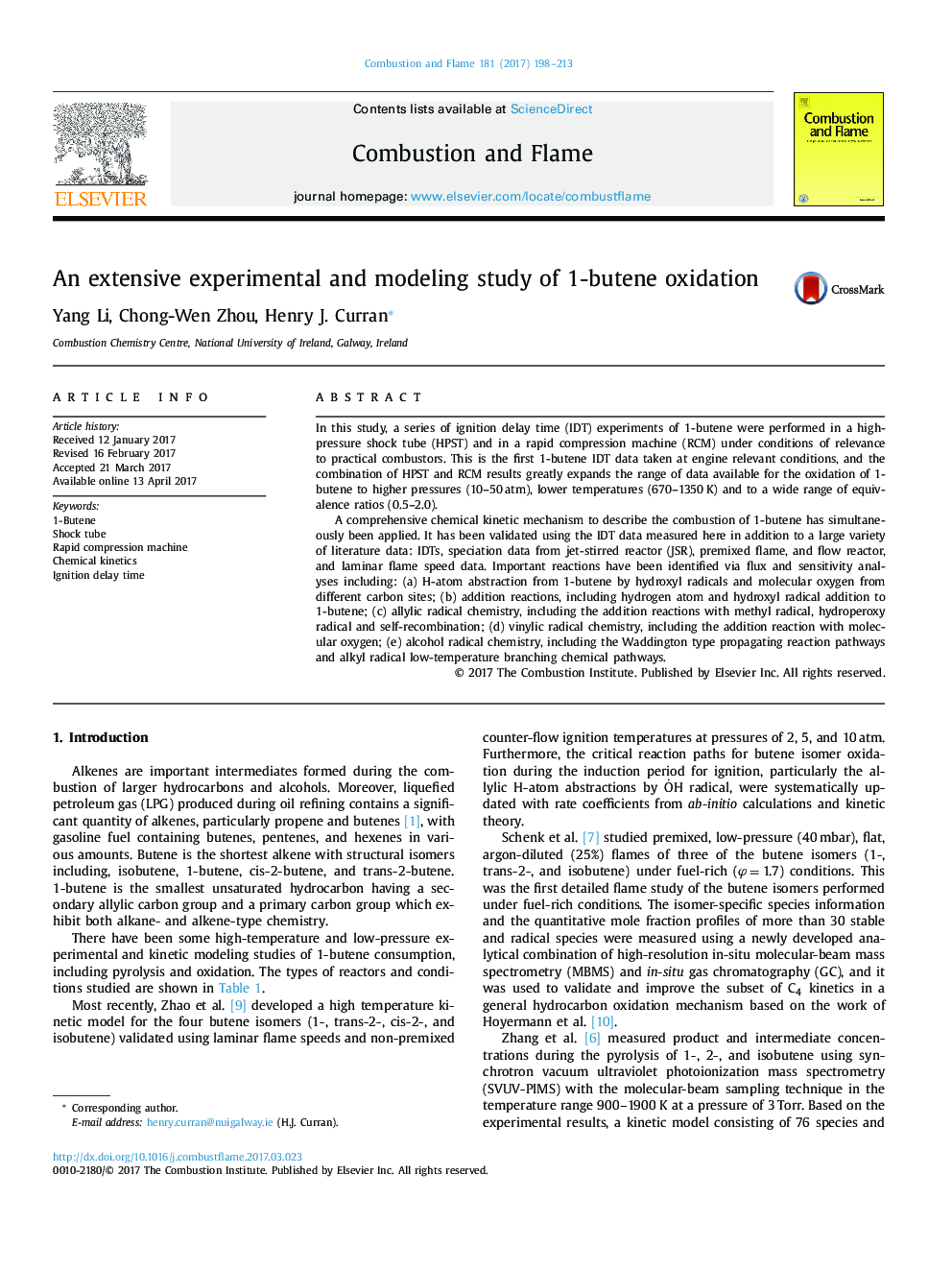| Article ID | Journal | Published Year | Pages | File Type |
|---|---|---|---|---|
| 6468209 | Combustion and Flame | 2017 | 16 Pages |
In this study, a series of ignition delay time (IDT) experiments of 1-butene were performed in a high-pressure shock tube (HPST) and in a rapid compression machine (RCM) under conditions of relevance to practical combustors. This is the first 1-butene IDT data taken at engine relevant conditions, and the combination of HPST and RCM results greatly expands the range of data available for the oxidation of 1-butene to higher pressures (10-50Â atm), lower temperatures (670-1350Â K) and to a wide range of equivalence ratios (0.5-2.0).A comprehensive chemical kinetic mechanism to describe the combustion of 1-butene has simultaneously been applied. It has been validated using the IDT data measured here in addition to a large variety of literature data: IDTs, speciation data from jet-stirred reactor (JSR), premixed flame, and flow reactor, and laminar flame speed data. Important reactions have been identified via flux and sensitivity analyses including: (a) H-atom abstraction from 1-butene by hydroxyl radicals and molecular oxygen from different carbon sites; (b) addition reactions, including hydrogen atom and hydroxyl radical addition to 1-butene; (c) allylic radical chemistry, including the addition reactions with methyl radical, hydroperoxy radical and self-recombination; (d) vinylic radical chemistry, including the addition reaction with molecular oxygen; (e) alcohol radical chemistry, including the Waddington type propagating reaction pathways and alkyl radical low-temperature branching chemical pathways.
